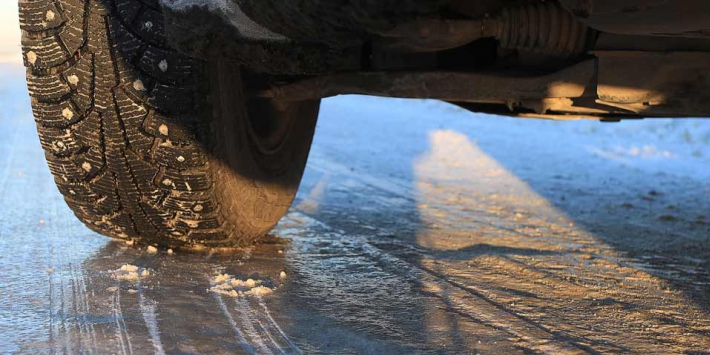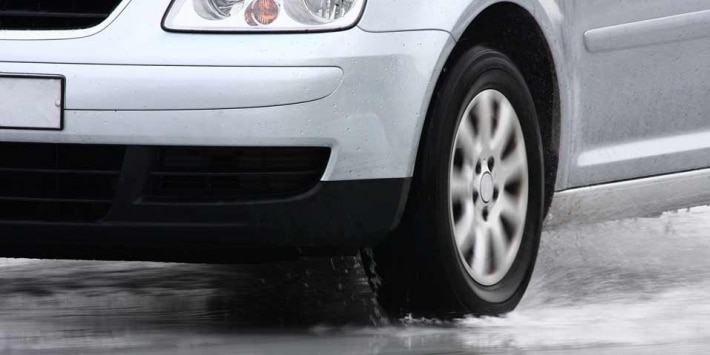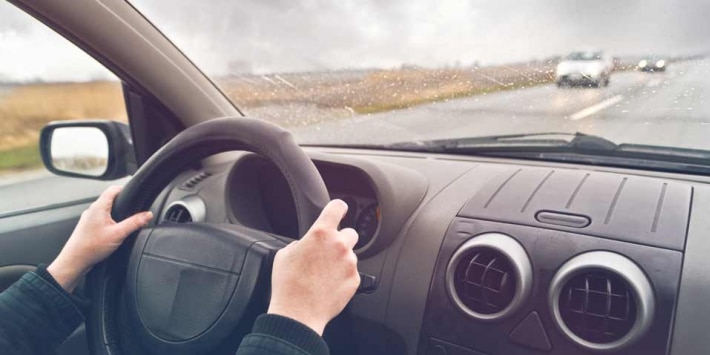In winter, you sometimes have to deal with unexpected driving conditions: snow, ice, difficult traffic conditions… Know how to prepare yourself and your vehicle for any eventuality: learn how to prepare your car for the cold, how to drive on snow or ice, and also how to react if your vehicle loses grip!

When driving on snow or ice, don’t get caught out: plan ahead!
If you need to drive your car in wintery conditions, plan your trip ahead and prepare your vehicle before leaving to avoid any nasty surprises:
Check the weather and traffic forecasts before you travel:
- it’s better to prepare for, or even postpone your trip, than to find yourself stuck in a tricky situation.
Check the state of your vehicle before you leave:
- test components which are sensitive to the cold such as the battery, top-up the windscreen washer bottle with antifreeze and check the condition of your windscreen wipers.
Equip your vehicle with 4 winter tyres as soon as temperatures drop below 7°C:
- their softer compound and deeper tread will provide more grip and better traction.
Check and adjust your tyre pressure before leaving:
- measure it “cold” before starting to drive and add 3 PSI/ 0.2 bar to the manufacturer-recommended pressures to compensate for the pressure drop in cold temperatures.
Make sure you have snow chains, just in case:
- when driving with snow chains, reduce your speed and do not exceed 30 mph.
Prepare a “survival kit” for protection against the cold if you are forced to stop:
- a scraper for the windscreen, a cloth to wipe away condensation, spare bulbs, a torch, warm clothes, a survival blanket, drinking water…
Adapt your driving style to winter conditions
Do not drive as you would in summer. When driving in winter, especially in snow and ice, you must take extra care and drive more smoothly in order not to lose control of your vehicle:
Avoid sudden braking, acceleration or direction changes:
- adopt a smooth and calm driving style, reduce your speed, drive at a safe distance from other vehicles and avoid sudden overtaking (never overtake a snowplough that is clearing the road!
- slow down while the road is still straight, avoid braking as you enter a corner and turn the steering wheel smoothly.
- Accelerate gradually to keep your drive wheels in contact with the road and avoid losing grip.
- On steep slopes or if your wheels start to spin, shift into a higher gear to reduce the force exerted on the wheels and increase tyre grip.
- As soon as it goes dark, switch on your dipped headlights so that you can see your surroundings and others on the road can see you, particularly pedestrians and cyclists.
If you lose grip, don’t panic: adopt the right practices
If, despite all the precautions taken, your vehicle suddenly loses grip, it’s important to know how to react to take control of it again:
- Never take your eyes of the road: if you focus on an obstacle, you are more likely to run into it.
- If you lose control of your vehicle when braking, release the brake pedal.
- If your wheels start to spin, shift into a higher gear to reduce the force applied and allow the tyres to grip the road again.
- For front wheel drive vehicles: if you start to slide, release the accelerator and press the clutch pedal to put weight on the front wheels.
- For rear wheel drive vehicles: if your rear wheels slide, play with the accelerator and clutch pedals to find grip again and slowly turn the steering wheel in the desired direction.




